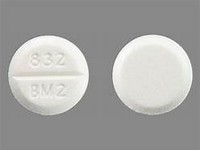Benzatropine mesilate
CLINICAL USE
DOSE IN NORMAL RENAL FUNCTION
IV/IM (emergency use): 1–2 mg
PHARMACOKINETICS
DOSE IN RENAL IMPAIRMENT
GFR (mL/MIN)
DOSE IN PATIENTS UNDERGOING RENAL REPLACEMENT THERAPIES
IMPORTANT DRUG INTERACTIONS
Potentially hazardous interactions with other drugsPhenothiazines and tricyclic anti- depressants: may cause paralytic ileus which can be fatal
ADMINISTRATION
Reconstition
–
Route
IV, IM
Rate of Administration
–
Comments
–
